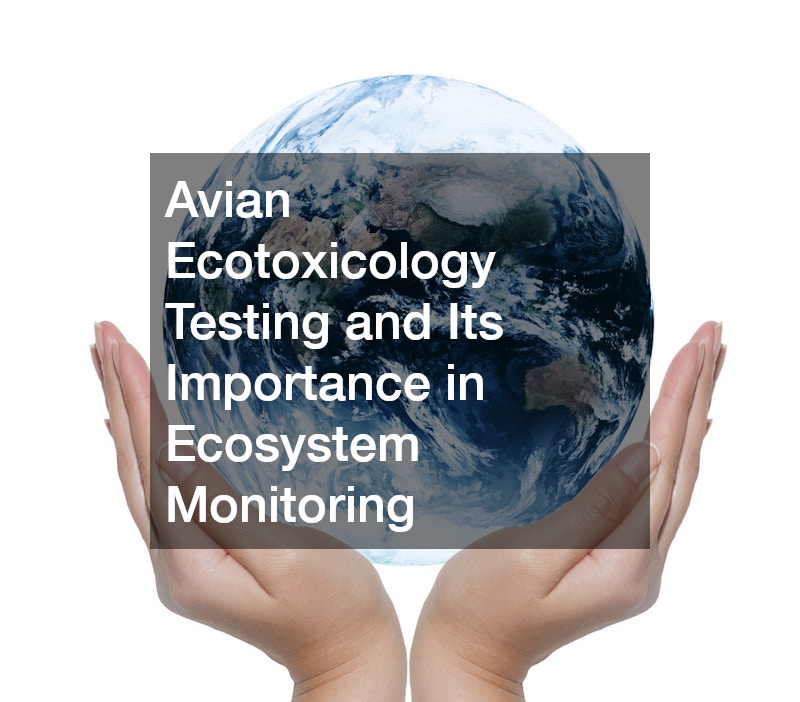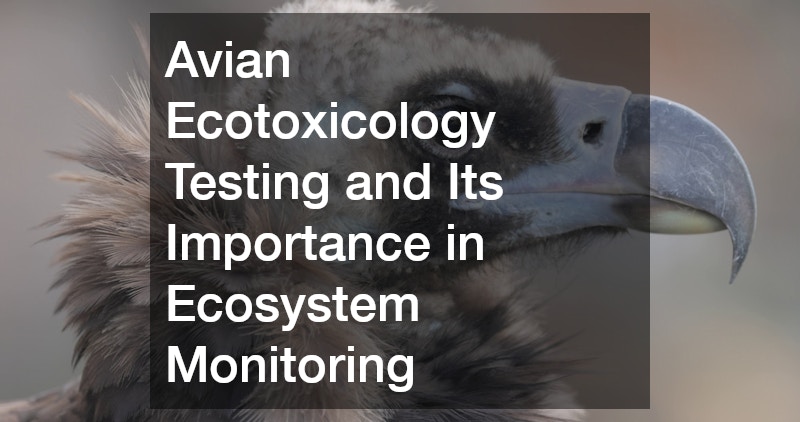Avian ecotoxicology testing plays a crucial role in understanding the effects of environmental contaminants on bird populations. These tests are fundamental in assessing the health of ecosystems, as birds are often indicators of broader environmental changes. The insight gained from avian ecotoxicology testing is instrumental in formulating conservation strategies and mitigating harmful effects on wildlife.
Understanding Avian Ecotoxicology Testing
Avian ecotoxicology testing refers to a variety of scientific methods used to study the impact of toxic substances on bird species. This research is vital because birds occupy various ecological niches and their health can reflect the overall state of an ecosystem. Scientists use these tests to detect pollutants like heavy metals, pesticides, and other persistent toxic substances in both terrestrial and aquatic environments.
The testing process involves collecting samples such as blood, feathers, or eggshells from birds either in their natural habitats or controlled environments. These samples are then analyzed for contaminants and their effects on avian health, including potential reproductive harm and changes in behavior. The data accumulated from these studies help scientists understand how pollution affects not just individual species but entire ecological communities.
Advances in technology have refined avian ecotoxicology testing methods over the years. Techniques such as gas chromatography and mass spectrometry allow for precise detection of toxicants even in minute concentrations. This precision is essential for understanding the sub-lethal effects that might not immediately kill birds but can cause significant ecological imbalances over time.
The Role of Avian Ecotoxicology in Ecosystem Monitoring
Birds are often considered sentinel species, acting as early warning indicators of ecological imbalances. Avian ecotoxicology testing enables the continuous monitoring of environmental health by providing data on how toxins interact with avian physiology. This information is crucial for ecosystem monitoring because it helps predict potential cascading effects on the food chain.
By analyzing trends in contaminant levels over time, scientists can detect gradual changes that might otherwise go unnoticed. This longitudinal data is invaluable in identifying emerging environmental threats and understanding how they impact various species. For example, declines in bird populations due to pesticide exposure often spearhead broader conservation efforts aimed at regulating or banning harmful substances.
Furthermore, avian ecotoxicology testing assists in validating the effectiveness of pollution control measures. Monitoring the recovery of bird populations following the implementation of such measures provides tangible evidence of their success or the need for adjustment. This aspect not only supports biodiversity conservation efforts but also aids in promoting sustainable environmental policies.
Challenges and Future Directions in Avian Ecotoxicology Testing
Despite its importance, avian ecotoxicology testing faces several challenges, including limited funding and the complexity of ecosystems. The resources required to conduct comprehensive studies are substantial, often restricting the breadth of research that can be undertaken. Moreover, ecosystems are dynamic, with numerous variables that can influence toxicological outcomes, making it difficult to isolate specific causal effects.
Another significant challenge is the ethical considerations involved in using live animals for testing. Although non-invasive methods and technological advances have minimized the need for destructive testing, ethical concerns persist. Researchers must ensure that their studies follow strict ethical guidelines and that the welfare of the animals is prioritized throughout the research process.
Looking forward, interdisciplinary collaboration will be indispensable in overcoming these challenges. Advances in molecular biology, for example, promise more refined methods of detecting and assessing ecological damage. By integrating avian ecotoxicology testing with other scientific disciplines, we can develop more comprehensive strategies for environmental conservation and restoration.


